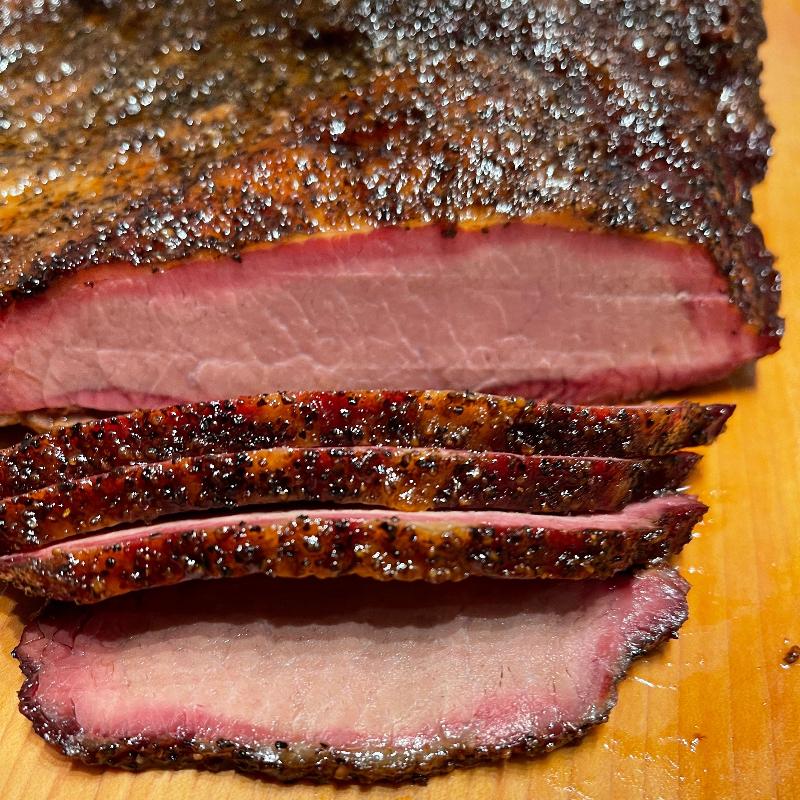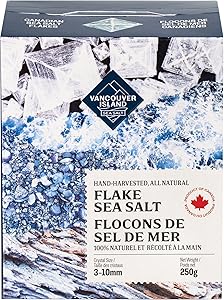This post contains affiliate links
Smoking brisket is more than just throwing beef on a smoker. It’s a craft honed through trial, error, and (in this case) dozens of briskets smoked. We’ve eaten brisket from here to Texas to learn the best and easiest way to smoke a brisket. Whether you’re a weekend BBQ warrior or aiming for competition-level results, read our simple tips to help you smoke tender, juicy brisket every time.
Jody’s Tip:
Smoking two briskets costs the same fuel and time as one—perfect for meal prep or feeding a crowd.
1. Start with a Whole Packer Brisket
A full packer includes both the flat (leaner muscle) and the point (fattier, juicier muscle). This ensures maximum flavour and tenderness. Choose one with even thickness and good marbling, ideally from a trusted butcher over a big-box store for consistent quality and less trimming waste. Trust us.
2. Trim the Brisket
Proper trimming is key to even cooking. Remove the thick kernel fat and any tough silver skin that won’t render down. Leave a ¼-inch fat cap to self-baste during smoking. Save trimmings to render into beef tallow, it’s liquid gold for later stages of wrapping & resting. This is a coveted Chef Jody tip!
3. Season Generously with a Rub
Traditional Texas rubs are simple: salt and pepper. For deeper flavor and a beautiful bark, experiment with spice blends like garlic, paprika, and jalapeño rubs. Aim for 1 teaspoon of kosher salt per pound and coat evenly on all sides.
4. Use Mustard (or Sauce) as a Binder
A thin layer of mustard helps your rub stick without affecting flavour. If mustard isn’t your thing, you can use BBQ sauce or let the brisket warm slightly so the natural moisture binds the rub. This is also known as a slather.
5. Low and Slow is the Way
Consistent temperature is everything for brisket. Smoke at 225°F for the best balance of tenderness and moisture. Larger briskets (14–18 lbs) can take 12–15 hours total. Cold weather? Slightly increase smoker temperature to compensate.
6. Fat Side Up (Most of the Time)
On pellet smokers like a Traeger, fat side up allows rendering fat to baste the meat. On grills or offset smokers with heat coming from below, fat side down may protect against drying out. Know your cooker and adjust accordingly.
7. Manage Moisture for Better Smoke
Smoke sticks to cool, moist meat. Spritz occasionally with apple juice or vinegar to attract more smoke and develop a deep bark. You can also use a water pan in the smoker for added humidity.
8. Wrap During the Stall
Around 165°F, brisket hits a “stall” where evaporation cools the meat, slowing the cook. Wrap it tightly in unwaxed butcher paper (or foil) to push through the stall while preserving bark. HOT TIP: after wrapping, we often finish the brisket in the oven for it to reach the key temperature of 203 F. This saves your charcoal or pellets!
TALLOW TIP! Before wrapping, drizzle with rendered beef tallow for extra juiciness. Click HERE for our video on how to WRAP BRISKET.
9. Cook to Temperature, Not Time
Brisket is done when the internal temperature reaches 203°F, where collagen fully breaks down, creating that famous melt-in-your-mouth texture. This temperature is highly regarded amongst BBQ experts. Use a reliable probe thermometer and resist rushing, good brisket waits for no clock.
10. Rest and Slice Correctly
After cooking, wrap brisket in a towel and rest it in a cooler for 1–2 hours to redistribute juices. When slicing, remember:
- Slice the flat against the grain for lean slices.
- Rotate and slice the point separately to avoid stringy cuts.
- Save the ends for irresistible burnt ends.

With these expert steps, you’ll go from brisket beginner to pitmaster-level results. As Chef Jody says: “I don’t wait for brisket—brisket waits for me.”






